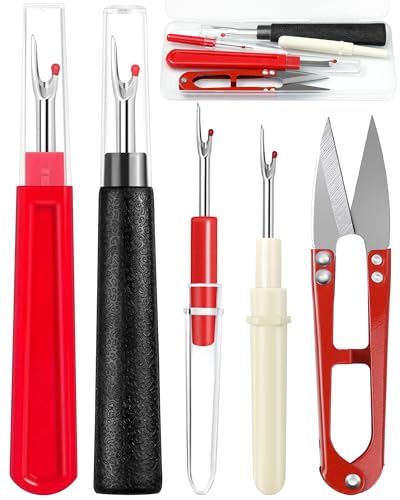There’s nothing quite like lounging on a swing, feeling the gentle breeze as you sway back and forth. But if your swing’s cushion has seen better days, it might be time for a little DIY magic. Making a fabric swing cushion not only adds comfort but also lets you express your personal style.
Overview of Fabric Swing Cushions
Fabric swing cushions provide comfort and style for outdoor relaxation. A well-crafted cushion not only enhances the swing’s aesthetic appeal but also improves overall seating comfort. Choosing the right fabric is essential, as it should withstand various weather conditions while maintaining its vibrancy.
Selecting durable fabrics like outdoor canvas or polyester ensures longevity. These materials resist fading, mold, and mildew, making them ideal for outdoor use. Additionally, opting for water-resistant or waterproof options keeps the cushion dry during unexpected rain.
Cushion filling plays a significant role in comfort. High-density foam provides support while maintaining its shape over time. Alternatively, polyester fiberfill offers a softer feel, perfect for those who prefer plush seating. Both options require proper care and maintenance to extend their lifespan.
Lastly, personalizing the design adds a unique touch. I often incorporate patterns or colors that complement the surrounding decor. This customization transforms a simple swing into a cozy retreat, inviting relaxation and enjoyment. Prioritizing comfort, durability, and style ensures a fabric swing cushion enhances any outdoor space.
Materials Needed
Creating a comfortable fabric swing cushion requires specific materials that ensure durability and style. Below is a list of essential items you’ll need.
Selecting the Right Fabric
- Outdoor canvas: This fabric is heavy-duty and resistant to fading and water, making it perfect for outdoor cushions.
- Polyester: Known for its durability, polyester is also resistant to mold and mildew, ideal for swing cushions exposed to various weather conditions.
- Cotton: If using cotton, opt for treated outdoor cotton to enhance its durability and resistance to elements.
- Patterns and colors: Choose fabrics that match or complement your outdoor decor, adding a personal touch to your swing cushion.
Tools Required
- Sewing machine: A sewing machine with a heavy-duty needle simplifies stitching thicker fabrics.
- Scissors: Use fabric scissors for clean cuts and accurate sizing of the cushion pieces.
- Measuring tape: Accurate measurements ensure a properly fitting cushion.
- Pins/clips: These help hold fabric pieces together while sewing.
- Thread: Opt for polyester thread for strong seams, especially for outdoor use.
- Iron: An iron helps smooth the fabric before cutting and sewing, ensuring neat seams.
Step-by-Step Instructions
Creating a fabric swing cushion involves careful measuring, cutting, sewing, and filling. Follow these steps to make a stylish and comfortable addition to your swing.
Measuring and Cutting Fabric
- Measure the swing seat’s dimensions accurately, including length, width, and thickness.
- Add an extra 1 inch to each measurement for seam allowances.
- Mark the cut lines on the fabric using a fabric pen for clarity.
- Cut the fabric using fabric scissors for clean edges.
- Cut two identical pieces for the cushion cover and a smaller rectangle for the side strips, if desired, for extra support.
Sewing the Cushion Cover
- Place the two fabric pieces right sides together.
- Pin or clip the edges to keep the fabric in place while sewing.
- Sew along the edges using a sewing machine, leaving one side open for filling.
- Use a zigzag stitch or finish the edges to prevent fraying.
- Turn the cushion cover right side out and iron it for a crisp finish.
Adding Filling and Closure
- Choose high-density foam or polyester fiberfill for the cushion’s interior.
- Stuff the cushion cover with the filling, ensuring it’s evenly distributed for comfort.
- Pin the open edge to prepare for closure.
- Sew the open edge shut using a straight stitch or slip stitch for a neat finish.
- Top it off with decorative elements if desired, like piping or buttons, to enhance the cushion’s aesthetics.
Tips for Customization
Customizing a fabric swing cushion elevates both comfort and style. Personal touches can create a unique focal point in your outdoor space.
Choosing Patterns and Colors
Selecting the right patterns and colors allows for personal expression and cohesion with outdoor decor. Opt for bold prints that can withstand sun exposure without fading. Geometric patterns create a modern look, while floral designs offer a more traditional vibe. Arrange color combinations that complement your existing furniture or the surrounding landscape. For example, pairing vibrant hues with neutral tones adds visual interest without overwhelming the space. Test small fabric swatches together to see how they interact in natural light before committing.
Adding Decorative Elements
Incorporating decorative elements enhances the charm of your swing cushion. Piping along the edges frames the cushion beautifully, adding a polished finish. Consider using contrasting fabric for piping to create a striking outline. Buttons can also serve as functional and stylish accents, securing the cushion cover while adding personality. Adding ties or Velcro straps ensures the cushion remains in place during use. For a playful touch, embroider initials or a design onto the cushion for a personal statement. By blending functionality with creativity, you ensure the cushion remains a standout piece in your outdoor space.
Care and Maintenance
Maintaining a fabric swing cushion keeps it looking great and prolongs its life. Follow these care steps to ensure your cushion stays vibrant and comfortable.
- Regular Cleaning: Clean the fabric regularly to remove dust and debris. I recommend using a soft brush or a damp cloth to gently wipe the surface. For deeper cleaning, use a mild soap solution and a sponge, rinsing thoroughly afterward.
- Spot Treatment: Treat stains immediately to prevent them from setting. Blot the stain with a clean cloth, then apply a fabric-safe stain remover. Rinse the area with water and let it air dry.
- Avoid Harsh Chemicals: Use gentle cleaning solutions, avoiding bleach or harsh detergents that can damage the fabric. Check the care label for specific wash instructions based on the fabric type.
- Proper Drying: If you need to wash the cushion cover in a machine, opt for a gentle cycle and cold water. Air dry the cushion to prevent shrinkage, avoiding direct sunlight that can cause fading.
- Storage: During off-seasons or inclement weather, store the cushion in a dry, cool place. If space allows, use a breathable storage bag or container to keep dust and moisture away.
- Periodic Inspections: Check the cushion regularly for signs of wear, like fraying edges or loose seams. Repair any issues promptly to prevent them from worsening.
- Avoid Excessive Moisture: If your swing cushion gets wet, dry it promptly to prevent mold and mildew growth. Keeping it dry during rainy weather extends its lifespan.
- Re-Fluffing: Fluff the cushion regularly to maintain its shape and comfort. Gently shake or pat the filling to ensure it stays evenly distributed.
By following these care practices, my fabric swing cushion remains a cozy and stylish addition to my outdoor space, ensuring it stays functional and appealing for years to come.
Conclusion
Creating a fabric swing cushion is not just about comfort; it’s a chance to express my style and make my outdoor space truly inviting. I love how a little creativity can transform a simple swing into a cozy retreat.
With the right materials and a bit of effort, I can craft something that’s both functional and beautiful. Plus, keeping it well-maintained ensures it’ll last for seasons to come.

So whether I’m enjoying a quiet afternoon or hosting friends, my custom cushion will always be a delightful addition to my outdoor relaxation experience. Happy sewing!

















